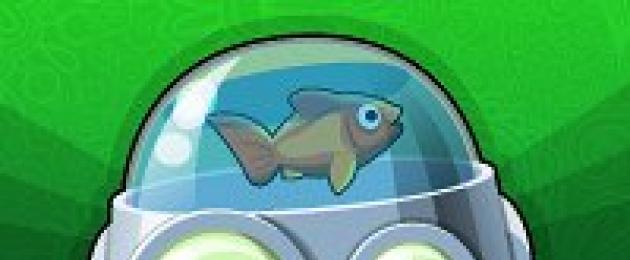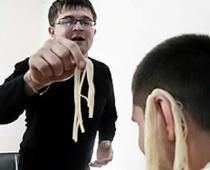Timur Lemeshko reviews: 5 ratings: 11 rating: 27
Great exhibition! A huge number of exhibits, each of which is extremely interesting. The amazing technology of the polymer method allows you to see fabrics in their natural form, as they were when preserved. Sections of organs, tissues, the whole body. The structures of the circulatory system are especially impressive: the smallest capillaries of the heart and kidneys. A complete visual model of the entire circulatory system of the hand! Extremely clear and informative. You could stand at each stand for hours, but the guide leads further, where it’s even more interesting, and so on for four, five, maybe six halls. At first I was surprised by the ticket price of 700 rubles, because... I came to another exhibition, but just went to this one. But it's really worth it. Very, very educational for both adults and children.
O-T-This Baba reviews: 1 ratings: 1 rating: 11
A very controversial feeling arose from what he saw. And I realized for myself that this is the only SERIOUS exhibition that I have been able to see in Moscow for such a long time. As a person studying drawing techniques, I needed this exhibition, but I couldn’t even imagine by 5% that my understanding of many things would be overestimated. The human body is exposed here. You can seriously think about the value of the whole person as a whole. It is fragile, there are no unnecessary parts, it is perfectly built and requires careful care, it is ingenious. We laugh at ourselves, killing him, we do not realize him and do not feel how most of those who visit see him as a pile of meat, a sea of laughter, disgust in the details and dirty irony for those great people who sacrificed their mortal body to explain to us a little more About Me. The asking price eliminates these halls from extremely wild visitors. The exhibition is not for everyone, and if you laugh, then go to the cinema, don’t embarrass yourself. A lot is exposed here, just try to consider it...

RobotCheloveche reviews: 14 ratings: 14 rating: 36
Surely many of you have seen photographs from this exhibition in other countries more than once. And finally, the exhibition (more precisely, its fourth part) reached the Capital.
Throughout the 6 years of its existence, disputes about its ethics arose every now and then around the exhibition. To be honest, I had some doubts about the possible occurrence of discomfort during the inspection of the exhibits, but my fears were not confirmed. Moreover, I am “terribly” delighted, so I recommend everyone who has the opportunity (and an extra 750 rubles on a weekend, 600 on weekdays) to go.
However, it is important to understand that in front of you will not be wax figures, but real people mummified using a special technology (in whole or in parts), who bequeathed their bodies to this exhibition.
In this sense, the exhibition is especially interesting for students of medical educational institutions, but it is also very useful for an ordinary mortal to know the structure of his body. In my opinion, it is not a sin to take schoolchildren on such an excursion as part of a human anatomy course. This is a truly fascinating sight that does not evoke fear or disgust.
But although the ticket says 6+, I wouldn’t recommend taking a child under 10-12 years old with you (here’s why).
In total, you will walk through 6 halls, which represent the main systems of the human body (musculoskeletal, digestive, cardiovascular, respiratory, reproductive, urinary, nervous).
About 200 exhibits will show in detail the general structure of the body, the interconnection of all its structures, individual organs (including those affected by various diseases), and the doctors working at the exhibition will answer your questions.
Rumor has it that they didn’t bring us the best part of the exhibition (no animals, mummies on a horse), but even a cyclist and a football player were enough for me personally.
What impressed me most was the circulatory system of the arm (resembling a half-meter-long bundle of cotton candy, only red), the vagina with lips, modestly lying separately from the rest, and the longitudinal section of the human body. I don’t know how it’s possible to chop it so neatly into 8 parts in profile and 13 parts in phase; Hirst is resting with his cow.
Also at the exhibition you can see joint replacements used by modern medicine, and read about the history of studying anatomy on TV screens.
This is probably strange, but towards the end of the excursion I developed a monstrous appetite. I realized that everything is spoiled by blood; without it, bodies look quite aesthetically pleasing.
And the funny thing is that all this is Made in China, because the main scientific organization involved in this project is located in Hong Kong and, as you already guessed, the exhibits are deceased Chinese.
Thank you for your attention.

Dr. Gunther von Hagens is the inventor of the plastination method and the creator of the original exhibition of plastinated exhibits “BODY WORLDS”, which takes place in different countries. Let's try to figure out what the exhibits presented at the exhibition “Secrets of the Body. The Universe Inside”, which takes place at the Vetoshny art center in Moscow, to Dr. Hagens and his “BODY WORLDS”.
The plastination method, invented by Dr. Gunther von Hagens, is actively used by other enterprising plastinators: as reported on the website bodyworlds.com, exhibitions that have nothing to do with Dr. Hagens travel around the world, including “Bodies...The Exhibition”, “The Amazing Human” Body”, “Body Exploration”, “Bodies Revealed”, “Mysteries of the Human Body”, “ Our Body. The Universe Within” [“Secrets of the body. The universe is inside”] and others.
The original exhibitions of Dr. Gunther von Hagens are easy to recognize: they are all called “ BODY WORLDS” [German. “KOERPERWELTEN ”] and have a serial number. Bodyworlds.com reports that many media sources mistake all plastinate exhibits for original exhibits created by the inventor of plastination: “These exhibits are imitations of the work of Dr. Gunther von Hagens and are in no way associated with, sponsored by, or endorsed by Dr. Hagens.” It is also reported that in one case, Dr. Günther von Hagens was suing the organizers of a plastinate exhibition (it is not reported which one) regarding the violation of his copyright.
Dr. Gunther von Hagens with his exhibit - a chess player,
This is a scientific and educational exhibition that has existed since 2007 and consists of approximately 200 exhibits - human bodies and organs processed using the polymer preservation method. The objectives of the exhibition are educational: increasing people's knowledge about their body and understanding the importance of a healthy lifestyle for the human body.
Exhibition "Secrets of the Body. The Universe Inside" in Moscow, age limit:
Children over 6 years old are allowed. Whether to bring a child to the exhibition is up to the parents to decide, taking into account the psychological characteristics and receptivity of the child. According to the organizers, the exhibition is useful for children, as it helps children develop knowledge about basic human anatomy.
|
Exhibition “Secrets of the Body. The universe is inside": |
|
|
exhibition opening hours: |
weekdays: from 10-00 to 21-00 weekends: from 10-00 to 22-00 |
|
exhibition address: |
Shares his impressions of visiting the exhibition "Secrets of the Body. The Universe Inside." In the center of Moscow, a stone's throw from the Kremlin and the Mausoleum - at the Vetoshny Exhibition Center - a unique exhibition "Secrets of the Body. The Universe Inside" is being held. The exhibition has already visited many cities in America and has collected a total of about two million. Most of the exhibits are plastinates.  What do we know about plastination and its founder? Plastination was discovered in the 1970s by Dr. Gunther von Hagens. Since 1993, he has headed the Institute of Plastination, which he created. According to him, he organized the institute because the University of Heidelberg could no longer carry out high-quality plastination, because plastination of one human body takes 1000-1500 working hours.
What do we know about plastination and its founder? Plastination was discovered in the 1970s by Dr. Gunther von Hagens. Since 1993, he has headed the Institute of Plastination, which he created. According to him, he organized the institute because the University of Heidelberg could no longer carry out high-quality plastination, because plastination of one human body takes 1000-1500 working hours.
In an interview, Hagens said: “I invented this method by accident in 1977, when I was an assistant at the University of Heidelberg. I asked myself, looking at the exhibited drugs filled with polymer, why they are filled in, and not the polymer is injected inside? It was then that I came up with the idea of impregnating the preparations with a biopolymer using a vacuum. To do this, the drug must first be immersed in ice-cold acetone. When, as a result of diffusion, water in the tissues is replaced by acetone, the substance should be immersed in a biopolymer. Acetone is vacuum pumped out, and its place in the tissues is filled with silicone.” Currently, more than 400 laboratories in 40 countries are engaged in plastination.

Gunther von Hagens became famous not only for his scientific experiments and even his contribution to science, but also for his organization of exhibitions and collections of dismembered human bodies frozen in rather “live” and sometimes trivial poses. Many consider such exhibitions to be a mockery of the dead, and the author of the exhibition, nicknamed “Doctor Death,” is a cynical necrophiliac who makes money from the dead. At the same time, his exhibitions are very popular and are visited by many people around the world.

In order to immediately dot the i’s and also to reassure the public, I hasten to explain. The Moscow exhibition is very chaste compared to the exhibitions of the founder of plasticization (there are no corpses of pregnant women in incredible poses with fetuses inside). The purpose of the exhibition is purely educational: to show how the human body works, showing all individual systems, individual organs, and muscle groups.


According to the organizers, guests of the exhibition can travel through the main systems of the body. Exhibits on the digestive and respiratory systems show how humans breathe and eat. 

Musculoskeletal exhibits – show how individual muscles or muscle groups work.


The exhibition is given tours by medical students who are ready to tell everything they know and show everything clearly. By the way, pathology is also noticeable in many exhibits, and future doctors willingly talk about diseases, how to avoid them or what to do if you already have some symptoms.

There are also almost no age restrictions at the exhibition: children from 6 years old are allowed to attend the exhibition. By the way, we asked how the children felt about the exhibits, and found out that the children did not find it very scary. Of course, every parent knows their child, and there is no need to force anyone.

The “Secrets of the Body” exhibition itself was created in 2007 thanks to the collaboration of the educational center The Universe Within Project, the Orlando Science Center and the Anatomical Science and Technology Foundation in Hong Kong. The exhibition consists of four sets of exhibits - one is currently on display in Moscow, the other two in South America, and the fourth has flown to Florida. After the end of the world tour, all exhibits will be collected into one large exhibition in Hong Kong.



Details in the Live Journal of Ekaterina Alekseeva
In the center of Moscow, a stone's throw from the Kremlin and the Mausoleum, a unique exhibition "Secrets of the Body. The Universe Inside" is taking place. The exhibition has already visited many cities in America and has collected a total of about two million. Most of the exhibits are plastinates. To find out what it is and what it all looks like, I went to the Vetoshny Exhibition Hall.

What do we know about plastination and its founder? Plastination was discovered in the 1970s by Dr. Gunther von Hagens. Since 1993, he has headed the Institute of Plastination, which he created. According to him, he organized the institute because the University of Heidelberg could no longer carry out high-quality plastination, because plastination of one human body takes 1000-1500 working hours.
In an interview, Hagens said: “I invented this method by accident in 1977, when I was an assistant at the University of Heidelberg. I asked myself, looking at the exhibited drugs filled with polymer, why they are filled in, and not the polymer is injected inside? It was then that I came up with the idea of impregnating the preparations with a biopolymer using a vacuum. To do this, the drug must first be immersed in ice-cold acetone. When, as a result of diffusion, water in the tissues is replaced by acetone, the substance should be immersed in a biopolymer. Acetone is vacuum pumped out, and its place in the tissues is filled with silicone.” Currently, more than 400 laboratories in 40 countries are engaged in plastination.

Gunther von Hagens became famous not only for his scientific experiments and even his contribution to science, but also for his organization of exhibitions and collections of dismembered human bodies frozen in rather “live” and sometimes trivial poses. Many consider such exhibitions to be a mockery of the dead, and the author of the exhibition, nicknamed “Doctor Death,” is a cynical necrophiliac who makes money from the dead. At the same time, his exhibitions are very popular and are visited by many people around the world.
In general, I went to the exhibition not without fears and with many questions.

In order to immediately dot the i’s and also to reassure the public, I hasten to explain. The Moscow exhibition is very chaste compared to the exhibitions of the founder of plasticization (there are no corpses of pregnant women in incredible poses with fetuses inside). The purpose of the exhibition is purely educational: to show how the human body works, showing all individual systems, individual organs, and muscle groups.



According to the organizers, guests of the exhibition can travel through the main systems of the body. Exhibits on the digestive and respiratory systems show how humans breathe and eat.


Musculoskeletal exhibits - show how individual muscles or muscle groups work.


Artificial joint


There is useful information on the stands.



The exhibition is given tours by medical students who are ready to tell everything they know and show everything clearly. By the way, pathology is also noticeable in many exhibits, and future doctors willingly talk about diseases, how to avoid them or what to do if you already have some symptoms.

There are also almost no age restrictions at the exhibition: children from 6 years old are allowed to attend the exhibition. By the way, we asked how the children felt about the exhibits, and found out that the children did not find it very scary. Of course, every parent knows their child, and there is no need to force anyone.

The “Secrets of the Body” exhibition itself was created in 2007 thanks to the collaboration of the educational center The Universe Within Project, the Orlando Science Center and the Anatomical Science and Technology Foundation in Hong Kong. The exhibition consists of four sets of exhibits - one is currently on display in Moscow, the other two in South America, and the fourth has flown to Florida. After the end of the world tour, all exhibits will be collected into one large exhibition in Hong Kong.
In Russia, scientific interest in plastination has moved into the practical phase. At the Department of Normal Anatomy of the Military Medical Academy (St. Petersburg), together with the Lebedev Institute of Synthetic Rubber, under the leadership of Professor Gaivoronsky, they developed their own technological process of plastination, which scientists called “polymer embalming.” Its difference is that for plastination we use domestic medical silicone and a number of know-how, which makes it possible to reduce the cost of obtaining biological specimens several times compared to German technology.
We invite you to the AFIMALL City shopping and entertainment center on 09/06/2014 to the exhibition “Secrets of the Body. The Universe Inside”.
The exhibition will be open to visitors from 09/06/2014 - 01/10/2015.
"Secrets of the body. The Universe within" (Our Body. The Universe within) is one of the most sensational exhibitions in the world. Over the 6 years of its existence, the exhibition visited Washington, Ontario, Los Angeles, Santiago, Costa Rica and other cities, attracting a total of more than two million viewers. The scientific and educational exhibition allows you to literally look “under the skin” of a person, to see with your own eyes how unique and perfect a mechanism our body is.
The exhibition features about 200 objects. All exhibits are real human bodies and organs processed using the polymer plastination procedure. The basic principle of the polymer method is the replacement of all fluids in the body with silicone. This allows you to preserve tissues and organs in their real “living” form, leaving even the most delicate structures intact.
Director of promotion of the exhibition “OUR BODY. The Universe Within” worldwide Heidi Pinchel notes that “the exhibition is purely educational, revealing the age-old secrets of the anatomy of the body. Guests can “travel through all the major systems of the body” and see first-hand how they function and how they are intricately connected.” Exhibits on the digestive and respiratory systems show how a person eats and breathes, and the musculoskeletal system shows how different muscle groups work together to keep the body moving. The bottom line is that by learning about our bodies, we can take better care of them and live healthier, longer, and happier lives. As people who have already visited the exhibition in other countries say, “once you see what a smoker’s lungs look like, you will never want to pick up a cigarette again.”
The creators of the exhibition especially emphasize that the exhibition will be extremely useful for specialists in the field of medicine. For the first time, they will be able to see our “inner universe” without being exposed to toxins. The polymer method is considered completely safe.
Representatives of medicine will visit the exhibition not only as guests. Qualified physicians, teachers, and medical students around the world serve as tour guides for this exhibit to provide guests with a better understanding of the unique workings of the human body. In Moscow, the exhibition guides will be medical students. According to medical experts, “the exhibition is an excellent addition to the system of general education and development of schoolchildren as an exit lesson in biology, and also contributes to the deep process of understanding the physiological aspects of human life and death.”
- In contact with 0
- Google+ 0
- OK 0
- Facebook 0







